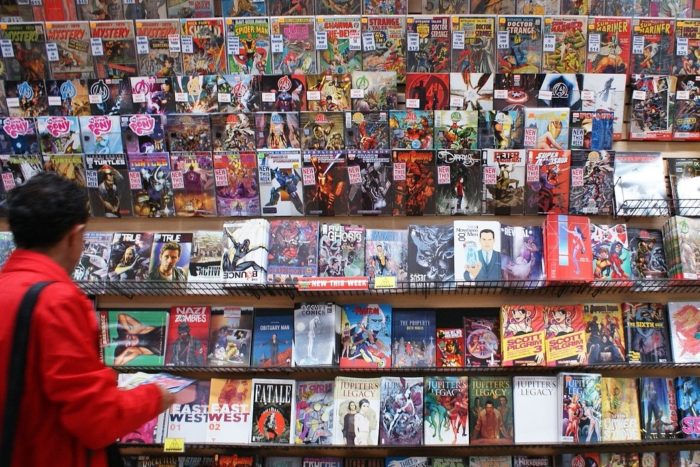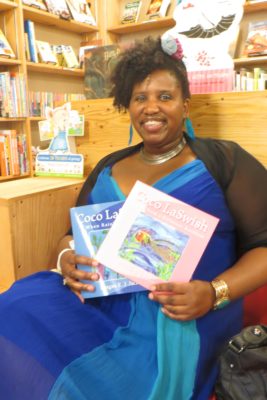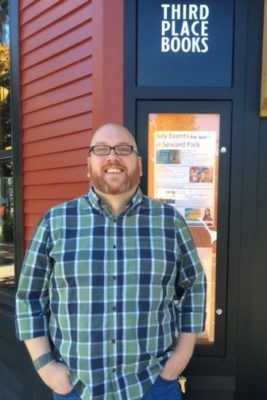
Ever since I was young, I have loved the written word — no surprise, considering what I do for a living.
But before deciding to be a writer when I grew up, I was an avid reader. Now I consider myslef a lifelong bookworm. I’ve read and enjoyed most genres: fantasy, general fiction, romance, mystery and the occasional sci-fi.
But as much as I enjoyed all of these books, there was something missing from my storied career as a bookworm: characters who looked like me.
It wasn’t that these characters didn’t exist, it was more that Asian Pacific Islanders (APIs) and other characters of color were often relegated to minor characters. In many cases, they were portrayed as mostly one-dimensional, perpetuating stereotypes.
Challenging the lack of diversity in children’s books
And for someone like Lynnwood resident Susan Harewood, reading about characters who are supposed to represent her as simplified stereotypes can be annoying — especially when reading is an escape.
So to avoid getting too annoyed, Harewood often gravitates toward children’s fiction, specifically little boys’ fiction for the 7-11 age range.
Harewood, an immigrant from Barbados, said so little of a bookstore is directed toward her that she goes for books that are as far away from herself as possible, adding that she prefers literature geared toward boys because she finds girls’ stories too “proto-romantic,” meaning characters tend to focus on boys and romantic relationships.
In contrast, “the boys are doing stuff,” she said.

And if the girls were “doing stuff” in books, Reagan Jackson found it was usually the white girls.
“I wanted to read books about girls of color, but the books about black girls were either about slavery, which I did not want to read about, or about these really urban stories with drugs and crime and teen pregnancy, none of which really resonated with my experience of being black,” she said.
Jackson, a columnist for the Globalist, said the white girls she read about were nuanced and complicated. They had boyfriends and best friends, went to space camp, solved mysteries, played sports and more.
To remedy this lack of representation, Jackson began writing her own stories, starting her first novel at age 9. She wanted to write stories about complex black girls and characters from various ethnic backgrounds, where the black girl is not the sidekick or the tokenized friend.
While Jackson’s novels remain in various stages of incompletion, she has completed — and published — two children’s books featuring Coco LaSwish, the rainbow fish who gets teased by other fish for having rainbow scales.
“When the hater fish teased her, she decided to be herself anyway, and found her own ocean filled with other unique fish who appreciated her for who she was,” Jackson said. “Coco’s message is ‘Be you.’ It’s always enough.”
Jackson will be reading from her Coco LaSwish books at Third Place Books in Seward Park next month.
According to Hannah Ehrlich, director of marketing and publicity for children’s book publisher Lee & Low Books in New York, the need for varied representation starts at a young age.
She said children need access to “window” books that teach them about others as well as “mirror” books in which they can recognize themselves.
“Unfortunately, many kids of color and other marginalized students often struggle to find books that reflect them and their experiences,” Ehrlich said. “Their absence from books and other media can send the message that they are invisible, that society does not value or care about them.”
She said the absence of books featuring different cultures also denies all readers the opportunity to build bridges, learn empathy and increase their understanding of our diverse society.
“So the lack of diverse books hurts everyone,” Ehrlich said.
For 25 years, Lee & Low has been working to change this. The company’s mission is to publish books “about everyone, for everyone,” Ehrlich said.
She added that Lee & Low was founded because there were so few children’s books available featuring characters of color. And those that were available often contained negative stereotypes or didn’t show diverse characters in a nuanced way.
Diverse main characters and experiences
Like Harewood and Jackson, I would love to see more complex characters in books whom I can relate to.
As I’ve gotten older, things have improved, but not that much. I discovered romances in college and now my bookshelves are lined with couples living happily ever after. But of my dozens of titles, the number of protagonists of color can be counted on one hand.
Where are the romances featuring people of color? We fall in love, too!
Over the years, I’ve discovered some amazing authors and have read some great books on APIs. But many focus on the immigrant story with characters struggling to overcome tragedy and start over in their new country.
Don’t get me wrong. We need these stories to remind us of our history.
Coming from an immigrant family, I understand and empathize with these stories. But I’d also love to see more stories featuring people of color as everyday people, since the current default of the everyday person is still white.
Seattle bookstores serving people of color
While Lee & Low is working to increase diversity in literature at the publishing level, a couple of local bookstores are working on it at the ground level, selling literature that reflects a fuller range of experience, which is lacking in the broader canon of literature at many general bookstores throughout Seattle.
Life Enrichment Book Store at 5023 Rainier Avenue South in Columbia City specializes in African and African American books. They just celebrated their 21st anniversary.
Kinokuniya Bookstore at 525 South Weller Street in Uwajimaya Village in Seattle’s Chinatown/International District specializes in Japanese books and literature, but has also carries Chinese books and literature, said manager Shigekazu Watanabe.
The store, which has been in Seattle for 30 years, carries a full range of books in most genres, from fiction to manga. Kinokuniya offers Japanese- and Chinese-language books as well as those translated into English, Watanabe said.
He said the store is important because they serve the local Japanese population — although their customer base represents people of all backgrounds.
Watanabe said their mission is to raise the profile of Japanese and Asian culture.

The new Third Place Books at 5041 Wilson Avenue South in Seward Park is a general bookstore but their goal is to reflect the diverse community that is South Seattle, said manager Eric McDaniel.
But McDaniel admits this is not always easy as only 3 percent of the literature published annually is literature in translation and works featuring diverse central characters are disproportionate to their percentage of the population.
“But we are always working to bring as much diversity to the shelves as we can,” he said.
One of the ways Third Place plans to do this is through help from their customers.
“When the people who shop with us can’t find a book, we hope they will let us know, so we can try to get it into the store for them,” McDaniel said.
Ehrlich said when we read stories about people who are different from ourselves, it creates an understanding for people we might otherwise not possess, and creates a bridge to community.
Think about that.
If there were more books available in the mainstream featuring Muslims, do you think there would be such widespread Islamophobia? If more books out there portrayed Latinos as everyday people, don’t you think fewer people would assume they were undocumented?
If there were more books available featuring people of color and other marginalized groups, don’t you think we would start being seen more as just people?
That is the power of the written word.
Catch Reagan Jackson’s next reading of “Coco LaSwish” at 11a.m. on July 9 at Third Place Books in Seward Park.

